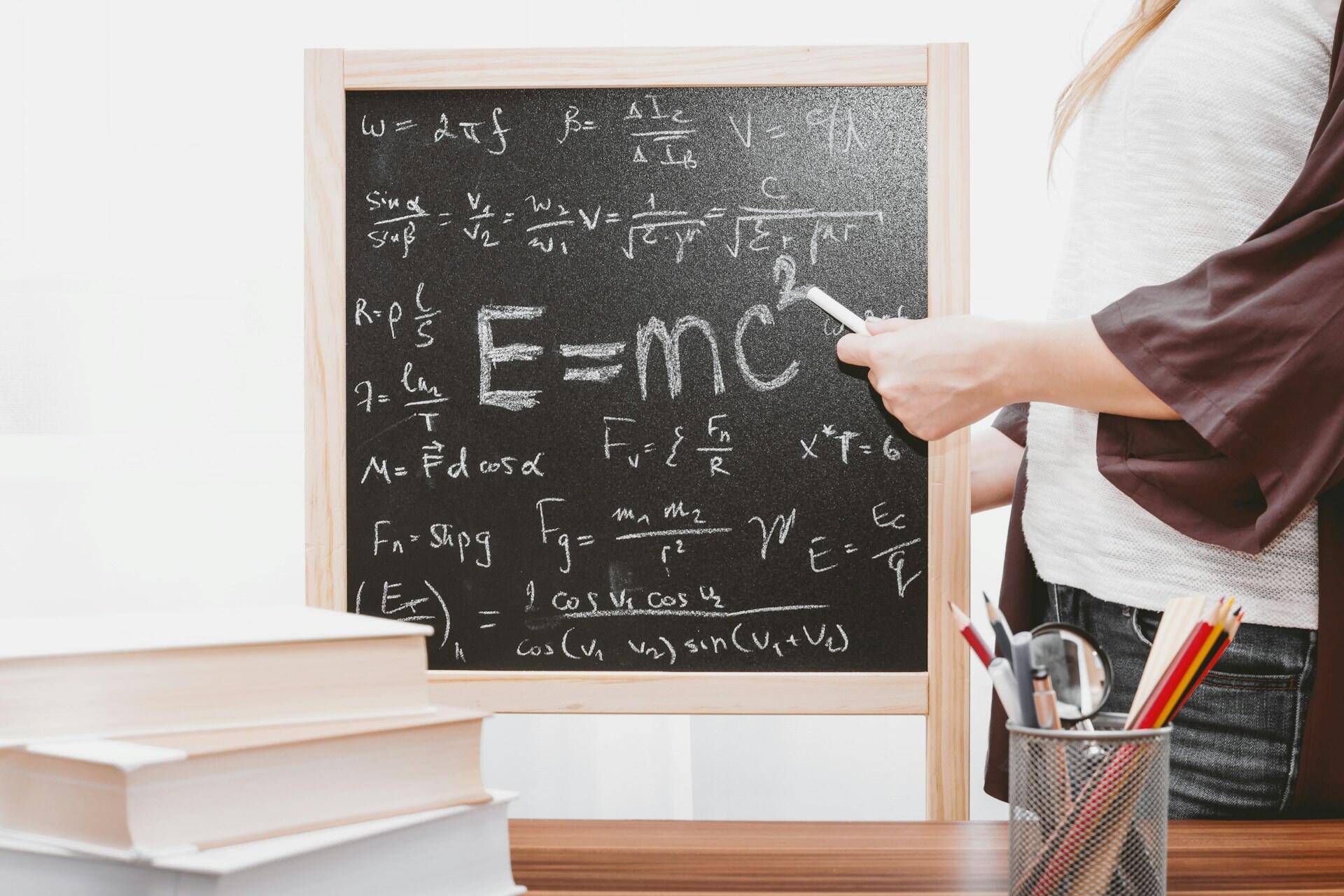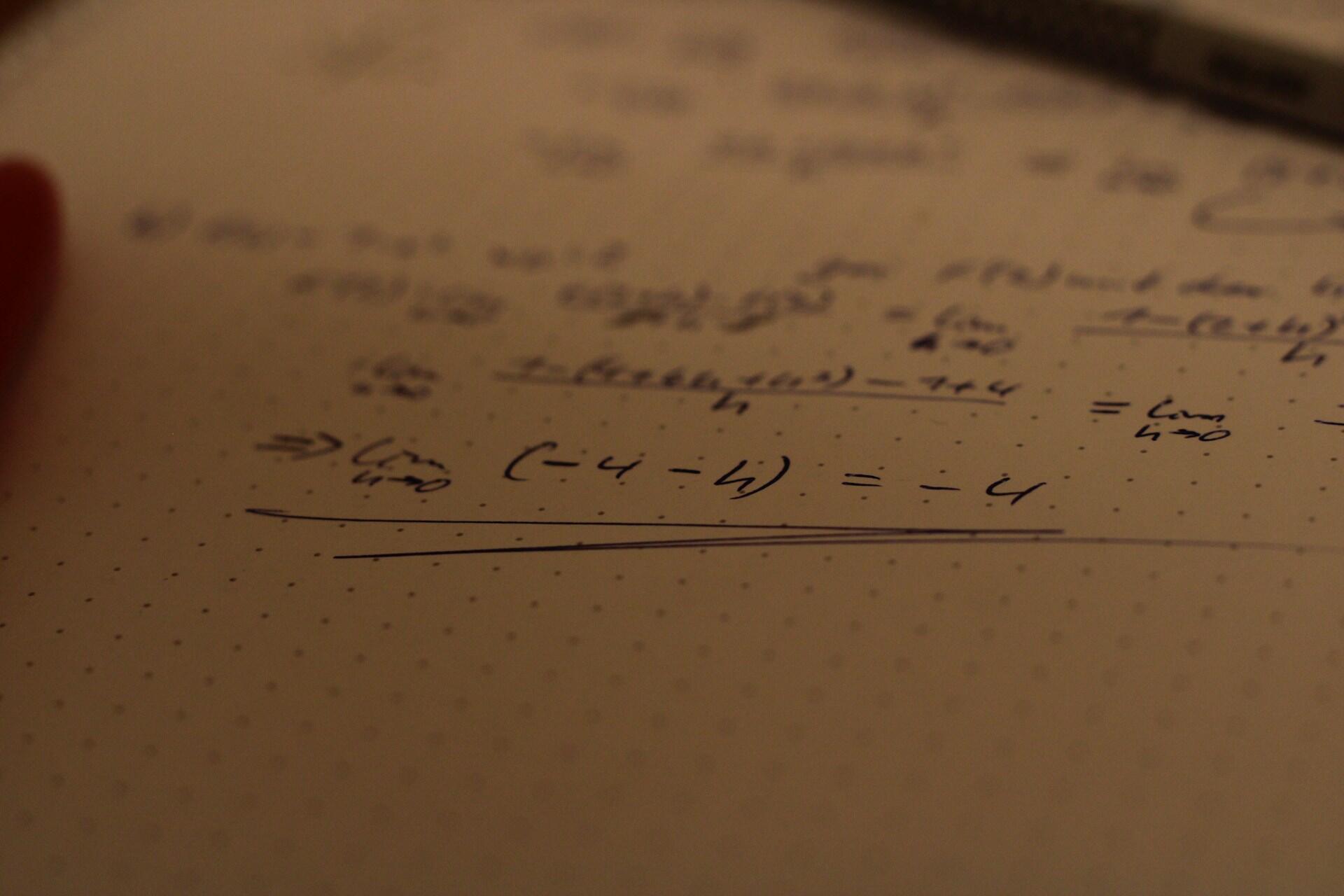Mathematics is an integral part of our world. From the architecture surrounding us to the technology we use daily, none of it would be possible without mathematics.
Some equations and formulas have transformed our understanding of the universe, led to scientific breakthroughs, and brought us incredible technological advancements.
Here, we'll look at the top 10 maths formulas that have influenced our world.

1. Pythagoras' Theorem
Pythagoras' Thereom is a formula that most of us will be familiar with from school. It explains the relationships between the sides of a right-angled triangle and one you can use in your everyday life.
It plays an essential role in geometry and is used in construction, navigation, and computer graphics.
Mathematician Spotlight: Pythagoras
- Use Case: Calculate the diagonal of a square or find the shortest path between two points.
2. The Law of Gravity
The Law of Gravity was famously discovered by Isaac Newton with the story of the apple falling on his head. It's certainly an entertaining story, but it's very unlikely that it's true.
That said, it doesn't diminish the discovery's importance. The law of gravity explains how every mass attracts every other mass with a force proportional to their masses and inversely proportional to the square of the distance between them.
Newton's Three Laws of Motion
An object at rest stays at rest unless acted on by an external force.
Force equals mass times acceleration (F = ma).
For every action, there is an equal and opposite reaction.
3. Euler’s Identity
Euler's identity links five fundamental constants. It plays a significant role in complex analysis and engineering. The constants are as follows:
- Euler's Number (e): Euler's number, approximately 2.718, is the base of the natural logarithm and describes continuous growth or decay in calculus.
- Imaginary Unit (i): The imaginary unit iii is defined as the square root of -1, forming the basis for complex numbers.
- Pi (π): Pi, approximately 3.14159, represents the ratio of a circle's circumference to its diameter.
- The Number 1: The number 1 is the multiplicative identity, as any number multiplied by 1 remains unchanged.
- The Number 0: The number 0 is the additive identity, representing the absence of quantity and leaving numbers unchanged when added.
- Combines algebra, geometry, and calculus
- Describes the unit circle in the complex plane
Mathematician Spotlight: Leonhard Euler
4. Quadratic Formula
The quadratic formula offers a systematic way to solve quadratic equations. It's widely used in several fields, such as:
- Physics: Calculating the time of flight and maximum height of a projectile.
- Engineering: Analysing forces in structures like bridges and towers.
- Finance: Solving equations related to interest rates and profit models, which are examples of maths you can use in your real life.
It's a powerful tool in algebra for solving second-degree polynomial equations. It works in all cases where a quadratic equation is presented and is something that students and professionals in mathematics, physics, and engineering will all learn.


5. The Theory of Relativity
Albert Einstein developed the Theory of Relativity in the early 20th century. This theory transformed our understanding of space, time, and energy.
It's divided into two main theories: Special Relativity (1905) and General Relativity (1915). The famous equation is from special relativity and describes the relationship between mass and energy.

The key concept behind this theory is mass-energy equivalence. It reveals that mass and energy are interchangeable. For example, a small amount of mass can be converted into a tremendous amount of energy, as seen in nuclear reactions.
It isn't the kind of maths that could help you win a game of poker, but it immensely helped advance nuclear physics.
In nuclear fission, a tiny fraction of uranium’s mass is converted into vast energy, powering nuclear reactors and atomic bombs.
Mathematician Spotlight: Albert Einstein
"Imagination is more important than knowledge. For knowledge is limited, whereas imagination embraces the entire world." – Albert Einstein
6. Logarithms
A logarithm is the inverse of an exponential function. There are three main types of logarithm: Common Logarithm, Natural Logarithm, and Binary Logarithm.
Logarithms are widely used in several scientific applications, with the most common being:
- Earthquakes (Richter Scale): The magnitude of an earthquake is measured using a logarithmic scale. A magnitude 7 earthquake is 10 times stronger than a magnitude 6 earthquake.
- Sound Intensity (Decibels): Sound's loudness is measured logarithmically in decibels (dB). A 20 dB sound is 10 times louder than a 10 dB sound.
- pH Levels: The acidity of a solution is measured using a logarithmic scale. A pH of 3 is 10 times more acidic than a pH of 4.
- Finance (Compound Interest): Logarithms help calculate investment periods to reach certain values in compound interest models.
Mathematician Spotlight: John Napier
7. The Fourier Transform
The Fourier Transform is a mathematical tool used to break complex signals into their individual frequency components. It transforms a function of time (or space) into a function of frequency, making periodic behaviour and patterns in data easier to analyse.
The Fourier Transform (FT) is a method for decomposing a signal into its frequency components, similar to how a musical chord can be broken down into individual notes. It transforms a time-domain signal into a frequency-domain representation.
Key Concepts
Describes how a signal changes over time.
Describes the frequencies present in a signal.
For example, a sound wave (time domain) can be represented by the individual frequencies it contains (frequency domain).
You can think of the Fourier Transform as a way to describe a complicated waveform by adding together simple sine and cosine waves (harmonics).
There are different variations of the Fourier Transform depending on the type of data being analysed:
- Continuous Fourier Transform (CFT): Used for continuous-time signals.
- Discrete Fourier Transform (DFT): Used for discrete-time signals and sampled data.
- Fast Fourier Transform (FFT): An efficient algorithm to compute the DFT quickly.
There are many applications for the Fourier Transform.
Signal Processing
- Audio Compression: MP3 and other formats use the Fourier Transform to compress sound files, an example of maths in the modern world.
- Image Compression: JPEG format uses the Discrete Cosine Transform (a form of Fourier Transform).
- Speech Recognition: Used in voice assistants like Siri and Alexa for frequency analysis.
Physics and Engineering:
- Vibrations Analysis: Understanding structural integrity through frequency analysis.
- Optics: Used in diffraction and lens design.
- Quantum Mechanics: Describes wavefunctions in terms of momentum space.

Medical Imaging
- MRI Scans: Fourier transforms are crucial in reconstructing cross-sectional images from raw data.
Mathematics and Data Science
- Solving Differential Equations: Used for partial differential equations in physics.
- Pattern Recognition: Used in feature extraction for machine learning models.
8. The Schrödinger Equation
The Schrödinger Equation is a fundamental quantum mechanics equation. It describes how the quantum state of a physical system evolves over time. It's important in modern physics and mathematics, especially when studying wave functions, probability distributions, and energy levels.
The equation is a partial differential equation that models how quantum particles such as electrons and protons behave. It has two forms, a time-dependent equation and a time-independent equation.
The equation has widespread applications in mathematics, physics, and engineering, especially in quantum mechanics, chemistry, and wave theory:
- Quantum Tunneling: Explains how particles can pass through energy barriers.
- Electronic Structure: Describes atomic and molecular orbitals in chemistry.
- Quantum Harmonic Oscillator: Models vibrations in molecules.
- Semiconductors: Foundation for quantum computing and transistor design.
Mathematician Spotlight: Erwin Schrödinger
"The task is not to see what no one has yet seen, but to think what nobody has yet thought about that which everybody sees." – Erwin Schrödinger
9. The Second Law of Thermodynamics
The Second Law of Thermodynamics states that the total entropy of a closed system will increase or remain constant over time.
Key principles for the Second Law are:
- Irreversibility: Physical processes are generally irreversible. Heat spontaneously flows from hot to cold objects, never the reverse without external work.
- Entropy Increase: Over time, the entropy of an isolated system never decreases.
- Energy Dissipation: Energy tends to disperse and spread out when it is not constrained.
- Thermodynamic Equilibrium: Systems naturally evolve toward a state of maximum entropy, or thermal equilibrium.

10. Maxwell's Equations
Maxwell's equations describe how electric and magnetic fields behave. There are four equations in total.
James Clark Maxwell combined four laws into a comprehensive theory that showed electric and magnetic fields are interconnected and can propagate as electromagnetic waves.
- Electric fields generate magnetic fields when they change over time.
- Magnetic fields generate electric fields when they change over time.
This work was monumental as it unified previously separate concepts, laying the foundation for modern physics.
Mathematician Spotlight: James Clerk Maxwell
"The equations are, to me, the most profound and beautiful ever created in physics." – Albert Einstein (on Maxwell's Equations)
Of course, these are just a few examples of great mathematicians and we could have mentioned those working on cracking maths enigmas or more modern maths heroes.















